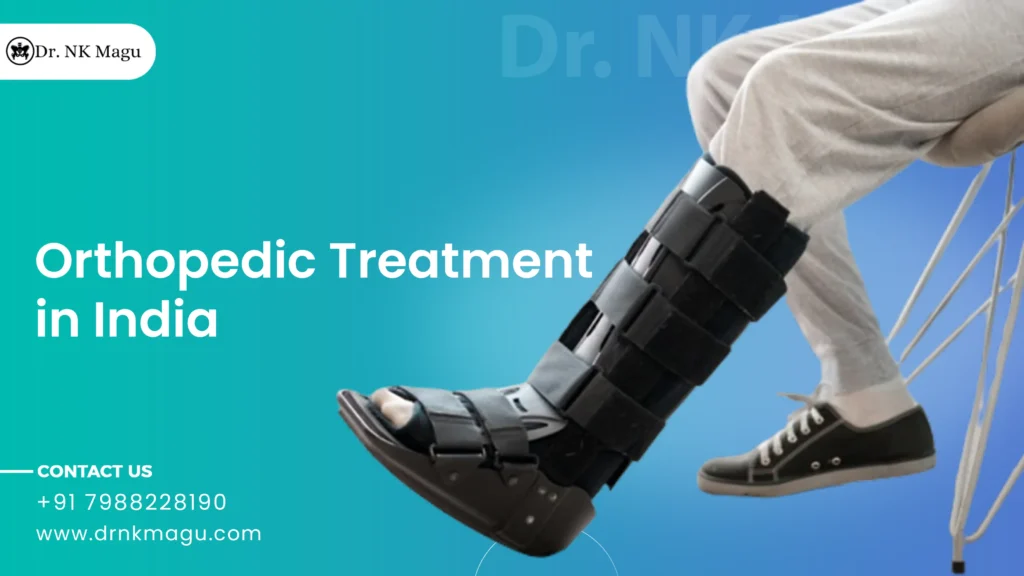Although many people may experience low back pain at some point in their lives, the vast majority will not require surgery to alleviate their discomfort.
Anatomy
The majority of back discomfort is felt in the lower back, which contains the five lumbar vertebrae and bears the majority of the upper body’s weight. Intervertebral discs, which serve as shock absorbers throughout the spinal column to cushion the bones when the body moves, maintain the gaps between the vertebrae. Tendons join the muscles to the spinal column, whereas ligaments maintain the vertebrae in place. The spinal cord is home to thirty-one pairs of nerves that regulate body movement and send information from the body to the brain.
What is Total Disc Replacement Surgery?
Total disc replacement surgery, also called disc arthroplasty is a type of spine surgery in which the damaged or degenerated discs are replaced with artificial discs to restore painless movement of the spine. The surgery aims to facilitate harmonic load sharing throughout the spine and prevent the onset of adjacent segment disease (ASD) by mimicking the biomechanics of a healthy disc
What are Spinal Discs and Their Functions?
Spinal discs, also known as intervertebral discs are the discs that surround and protect the spinal cord. They are composed of two parts, the outer ‘annulus fibrosis’ and the soft inner core ‘nucleus pulposus’. They are made up of annular layers of connective tissue and has elastic sheath allowing them to move in every direction. The elastic core called the nucleus has a shock-absorbing effect. They provide stability and allow for proper movement of the spine. Approximately 80% of the disc is made of water at birth. The disc needs to be properly hydrated in order to function properly. Their main functions are:
- To serve as a cushion/shock absorber between the vertebrae
- To maintain the alignment of the spine
- To facilitate the range of motion
- To provide support to hold the vertebrae of the spine together
The spinal column contains 23 vertebral discs in total. Any of these discs can experience specific issues that lead to specific symptoms, such as pain that comes from within the disc or pain that is caused by the disc pressing on a nearby nerve.
What Causes The Need for Disc Replacement?
The ability of the disc to perform its function decreases gradually resulting in a decrease in the range of motion and back pain. Degeneration of the disc can happen due to certain causes such as aging, genetic factors, and mechanical overloading. The discs are avascular in shape making them susceptible to damage and loss of ability to regenerate. Degeneration of the spine can happen at any part of the spine but is most common in the cervical and lumbar areas. It will cause pain in the neck and back. Replacement of the disc is recommended only if the non-surgical treatment is not effective and the pain interferes with daily activities.
Different Spinal Discs Problems
Certain types of disc problems that are commonly known are:
- Prolapsed disc – It is also known as a slipped disc or herniated disc. The gel-like content of the disc oozed out and pressed on a nearby nerve causing pain
- Degenerative disc disease (DDD) – The function of the disc gradually decreases with aging
- Discitis – It occurs when there is an infection in the discs
Types of Artificial Disc
There are different types of artificial discs available for total disc replacement surgery. A short explanation is given below:
- Composite disc – A polyethylene (plastic) spacer is typically positioned between two metal endplates to form the composite artificial disc
- Hydraulic disc – It has a dehydrated core implanted inside. It provides space and mobility between the bones of the vertebrae
- Elastic disc – It is also composed of two materials, instead of a plastic core, it has a polycarbonate urethane core sandwiched between two metal plates. The center core’s “deformable” nature is intended to replicate the viscoelastic characteristics of the natural disc
- Mechanical – It is typically made up of two articulating parts made of the same material (metal, for example) or a combination of metal and ceramic.
Total Disc Replacement Surgery Cost in India
Total disc replacement surgery cost in India starts from INR 5,42,000 (6500 USD). It can be significantly lower compared to many other countries, making it an appealing choice for individuals seeking quality medical care at an affordable price. The lower cost is often attributed to factors such as reduced overhead expenses, competitive pricing, and a well-established medical infrastructure. Medical facilities in India are known for maintaining high standards of healthcare, with many hospitals equipped with advanced technology and skilled medical professionals.
Diagnosis Done Before Total Disc Replacement Surgery
Your surgeon can direct some tests to evaluate your suitability for disc replacement, such as:
- Scans using magnetic resonance imaging (MRI)
- Discography
- CT (Computerised Tomography) scans
- X-rays
Your surgeon will be able to identify the cause of your back discomfort with the aid of the data from these tests.
Total Disc Replacement Procedure
Disc replacement surgery is considered a replacement of an old spinal fusion technique. It allows to maintain motion of the spine while reducing pain. In total disc replacement surgery, the damaged disc is removed and replaced with an artificial disc specially made similar to the natural disc structure of the patient. The surgery is performed under general anesthesia. The candidate is not allowed to drink or eat at least for a few hours prior to surgery to prevent the chances of complications with the anesthesia.
- The patients lie flat on the back
- An incision is made on the abdomen to access the spine
- The organs, muscles, and or blood vessels are moved aside
- The damaged disc is removed from between the vertebral bodies, from the disc space, including the outer part, the annulus, and the nucleus
- The disc space is cleared, measurement is taken to ensure proper sizing and fitting of the device
- The prosthesis is implanted in between the vertebrae. During the process, real-time fluoroscopy, or a live X-ray, is used to make sure the device is placed correctly
- The blood vessels and tissues are moved back to their original positions
- The incision is stitched closed with the suture
Postsurgical Recovery
Following surgery, patients are required to remain in the hospital for at least a day. A prescription for painkillers will be given to reduce the discomfort. Prior to being released from the hospital, the patient will receive the necessary aftercare instructions, including cleaning instructions for the incision and pain management techniques. Everybody will recover differently. Remember that healing takes time for your body. Easy physical activity, such as a quick stroll, enables you to return to your regular schedule earlier. After surgery, 4-6 weeks are typically needed for full recovery.
Why Dr. N. K. Magu?
Indian orthopedic surgeon Dr. N. K. Magu is well-known throughout the world for his exceptional skill and commitment to his work. Dr. N. K. Magu has demonstrated over many years that he is an outstanding specialist in numerous orthopedic professions, particularly in the areas of hip preservation, reconstruction, proximal femoral osteotomies, and related topics. His unwavering dedication to improving the quality of life for his numerous patients has solidified his standing as one of the top orthopedic surgeons in the world.











